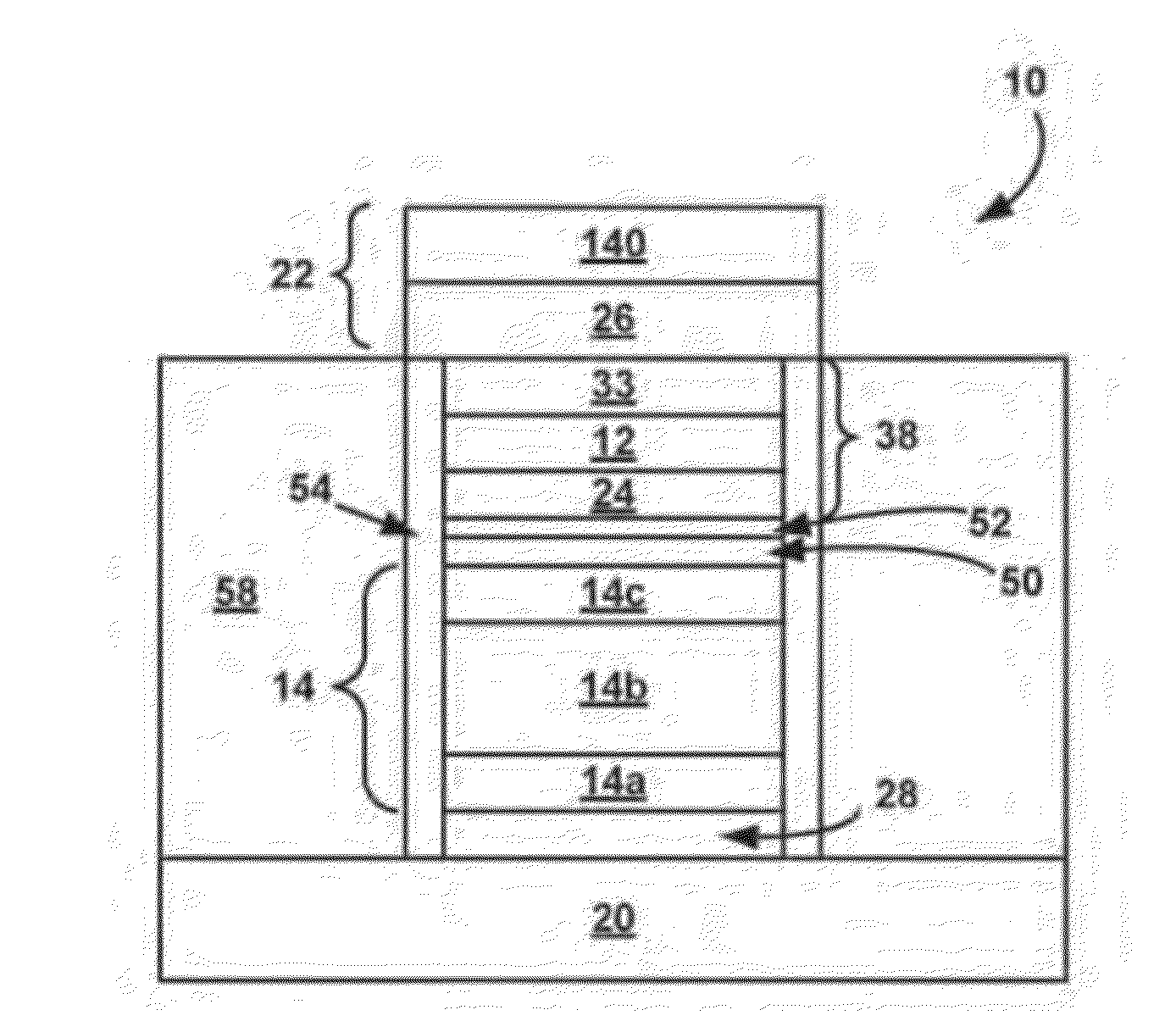Non-Volatile Storage System Using Opposite Polarity Programming Signals For MIM Memory Cell
a programming signal and mim memory technology, applied in the field of data storage technology, can solve problems such as technical challenges in the fabrication of memory devices from carbon-based materials
- Summary
- Abstract
- Description
- Claims
- Application Information
AI Technical Summary
Problems solved by technology
Method used
Image
Examples
Embodiment Construction
[0029]Some carbon nanotube (“CNT”) materials may exhibit resistivity switching properties that may be used to form microelectronic non-volatile memories. Such films therefore are candidates for integration within a non-volatile three-dimensional memory array.
[0030]Indeed, CNT materials have demonstrated memory switching properties on lab-scale devices with a 100× separation between ON and OFF states and mid-to-high range resistance changes. Such a separation between ON and OFF states renders CNT materials viable candidates for memory cells in which the CNT material is coupled in series with vertical diodes, thin film transistors or other steering elements. For example, MIM stack formed from a CNT material sandwiched between two metal or otherwise conducting layers (commonly referred to as top and bottom electrodes. although any orientation may be used, and the top and bottom electrodes may also be referred to as first and second electrodes) may serve as a resistance-switching elemen...
PUM
 Login to View More
Login to View More Abstract
Description
Claims
Application Information
 Login to View More
Login to View More - R&D
- Intellectual Property
- Life Sciences
- Materials
- Tech Scout
- Unparalleled Data Quality
- Higher Quality Content
- 60% Fewer Hallucinations
Browse by: Latest US Patents, China's latest patents, Technical Efficacy Thesaurus, Application Domain, Technology Topic, Popular Technical Reports.
© 2025 PatSnap. All rights reserved.Legal|Privacy policy|Modern Slavery Act Transparency Statement|Sitemap|About US| Contact US: help@patsnap.com



